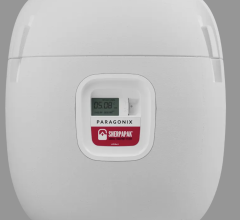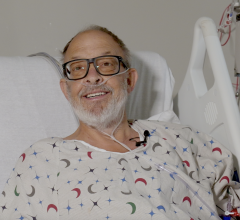
The prevalence of obesity in the U.S. is alarming, claiming nearly a third of the nation's adult population, according to the CDC.1 And the negative physical and emotional consequences are sobering: Diabetes, joint degeneration, hypertension, cardiac disease and sleep apnea are among the many serious co-morbidities associated with this disease. Because obesity contributes to significant reduction in health status and eventually death, healthcare professionals frequently encounter extremely sick hospitalized patients suffering from serious obesity-related co-morbidities. In addition to significant medical management, these morbidly obese patients may require differences in nursing and allied healthcare practices. Nurses have identified special challenges associated with nursing care of morbidly obese clients. These challenges include physical differences, mobility, safety, use of specialized equipment and unique skills required to provide a sensitive and dignified care experience.2 There is also evidence to support the consideration of altered safety practices with respect to care staffing ratios and activity time management for dependent bariatric patients.3 Nurses who care for bariatric patients may not identify themselves as "bariatric nurses,” but there is no doubt that they require unique nursing knowledge and skills that can be applied to this unique patient population. The purpose of this article is to discuss one of the most prominent challenges associated with bariatric inpatient nursing care: the use of specialized equipment to improve safety and mobility. This article also describes facility considerations and staff safety concerns pertaining to serving bariatric clients. Staff Safety Patient and staff safety are of paramount importance during patient handling and movement activities. Caregivers are well aware of the dangers associated with patient handling. According to a November 2006 Bureau of Labor Statistics report, private industry nurses, nursing aides, orderlies and attendants experienced over 70,000 occupational injuries and illnesses that resulted in days away from work during 2005.4 According to the same report, nursing aides, orderlies and attendants were one among the top three job classifications that accounted for 20 percent of all sprains and strains reported during 2005. The Bureau of Labor Statistics also states that most of the cases of overexertion among nursing, psychiatric, and home health aides resulted from lifting patients.5 Caregiver injury related to patient handling impacts staffing levels, scheduling, retention and morale, while increasing staff turnover, litigation and legal costs. Injury, and the fear of injury or re-injury, may reduce the frequency and extent of patient turning, repositioning in bed, pivot and lateral transfers. In recent years, the American Nurses Association began an ambitious initiative called “Handle with Care” aimed at preventing potentially career-ending injuries among nurses.6 And in September 2006, a bill was introduced in the U.S. House of Representatives — the “Nurse and Patient Safety & Protection Act of 2006” (H.R. 6182) — which is aimed at reducing injuries to patients, nurses and other healthcare providers by establishing a safe patient-handling standard.7 A number of states, including Texas and Washington, have already enacted legislation with similar intent. According to the ANA's Handle with Care Web site, a six percent shortfall of RNs available in the job market occurred in 2000, and by the year 2020 there will be a 20 percent shortfall. In addition, the average age of American nurses is climbing (43.3 in 2000),8 and data from the Bureau of Labor Statistics November 2006 report show that injured older workers miss more days of work than younger workers.9 There are tremendous incentives for healthcare organizations to protect their human resources. The human and financial cost of patient handling related injury can be staggering. Safe bariatric patient handling must move beyond biomechanics and include assistive technologies in order to minimize the risk of injury to patient or staff. Mobility Goals Early patient mobilization is a concept well accepted in nursing. However, the act of mobilizing a patient may be complex and require unique assessment, psychomotor and communication skills. Nursing has a key responsibility to ensure safe mobility, which often requires the consultation of physical therapy. A partially dependent nonbariatric patient weighing 140 pounds who is 50 percent weight bearing would require equipment or staff to assist with approximately 70 pounds of their weight. Consider, however, the bariatric patient weighing 400 pounds who is also 50 percent weight bearing. It would be unreasonable to expect staff to assist in bearing 200 pounds of the patient's weight. Bariatric equipment is often developed for either totally mobility-dependent patients (lifts, transfer equipment, beds) or patients who can use equipment independently to assist with mobility (wheelchairs, walkers, canes). More equipment should be developed and utilized to assist with those patients who fall between total dependence and independence (standing frames, gait training lifts, ambulation devices). All of these factors combined create a challenging situation for healthcare providers to identify equipment and methods to progress a patient from dependency to independence. Using Equipment to Meet Goals One of the first steps of successful patient mobility is an accurate assessment of the patient's previous and current level of safety and independence. Healthcare providers must understand the patient's deficits relative to short- and long-term mobility goals. Many bariatric patients are very mobile and agile. It would be a mistake to assume that patients are not capable of independent mobility simply based on their weight or size. The inability for a bariatric patient to safely mobilize with minimal assistance may indicate the need for equipment and/or consultation with a physical therapist. Healthcare providers should consider the use of mobility screening tools such as those developed by Michael Dionne, PT, to aide in identifying patients who may require differing levels of mechanical aide and therapy.10 The process of planning a successful mechanical transfer or mobilizing a bariatric patient begins long before the mobilization event. Bariatric patient mobility may require intense human resource dedication from a team of providers who can pre-plan the event while including the patient as a member of the team. It is often difficult to use large mechanical bariatric equipment in a humanistic manner. Bariatric patients have often experienced obesity stigma. Many may feel that use of equipment is an affirmation of burden. It is imperative for staff to understand the importance of providing the patient with dignity. Adequate communication with patients and ensuring their ownership and understanding of the process is one way to promote success. Healthcare providers must also understand that their goals are not always aligned with the patient's. Goals should be agreed on in realistic and measurable amounts. Selecting Patient Handling Equipment Practical considerations in the selection of bariatric patient handling equipment include weight capacity, equipment size relative to the patient and potential facility barriers (door widths, room sizes, bathroom sizes, room geometries). The next step is to ensure equipment will safely and efficiently accomplish the task for which it's needed. Bariatric patient handling equipment is usually larger, heavier, more robust and more difficult to maneuver or transport over a distance than standard-sized equipment. The extra weight and size of bariatric patient handling equipment has prompted some manufacturers to motorize transport equipment to reduce push/pull forces to a more acceptable level. Self-propelled stretchers, wheelchairs, beds and bariatric equipment tuggers are readily available and should be strongly considered by healthcare organizations. The need for self-propelled devices is especially important when distances traveled are long, hallways are carpeted and when inclines, frequent turns or stops and starts will be encountered. Empowering staff to participate in testing equipment prior to purchase greatly assists in determining its ability to satisfy mobility goals. At the end of the equipment trial staff should be surveyed by questionnaire or other consistent means of analysis to learn their opinions. Staff equipment surveys should explore ease of use, perceived exertion or stamina, effectiveness, time efficiency, patient comfort and patient and staff safety. Other considerations include equipment maneuverability, stability, storage convenience, accessibility, decontamination, perceived durability and dependability. Staff responses should make a significant contribution to the decision-making process. Unit trials and staff evaluations of patient handling equipment may also contribute to easier, more effective implementation because a shared decision-making process was used. Implementation plans should include staff training in the safe and effective utilization of new patient handling equipment. Ideally, the training would include thorough demonstrations and return demonstrations intended to show staff competency. Weight Capacity and Size Equipment, support surfaces and furnishings, weight capacities and size concerns should be identified wherever bariatric patients are accommodated. A bedside commode with a 250-pound weight capacity logically should not be considered with a patient weighing 600 pounds for fear that the commode would not support the patient's weight. Further, the size of a 250-pound weight capacity bedside commode would not, in all likelihood, physiologically fit a 600-pound patient. Likewise, equipment that cannot fit through a patient or clinic door, or onto an elevator may negate any positive benefit the equipment might hold because of its size. There may also be facility concerns that must be addressed in order to accommodate obese guests. Love seats and benches in hospital lobbies and waiting rooms tend to be the chairs used by morbidly obese clients since the size of those surfaces will better fit them. While this seating appears appropriate, there should be concern about the weight capacity of the seating. Replacing standard weight capacity chairs with 1000-pound weight capacity love seats, benches and outsized individual seating provides an extra measure of guest safety. Several manufacturers are producing bariatric furniture designed to fit well with most decors. Wall-mounted toilets may also pose a problem because of the strength of the porcelain and forces applied to the mounts. Manufacturers now make wall-mounted toilet supports that increase their weight capacity to 1000 pounds. Consideration should also be given to the wall-mounted sinks as well. Their shear rating may be as low as 250-pounds, and it is not unreasonable to think that a person of significant size who is sick, weak or faint could exceed a 250-pound shear rating if they bear forceful weight on the sink. If the bariatric population is to be safely served, a portion of clinical, radiological, operating room, birthing and other exam or procedure tables should be of a size and weight capacity appropriate for this client population. Well-Designed Rooms Healthcare institutions should consider the size and weight capacities of their beds, room recliners, bedside commodes, shower chairs and other weight-bearing furnishings. Some healthcare institutions are addressing these concerns by creating rooms or units that have been designed and designated for bariatric patients. They are generally larger rooms for the accommodation of larger patients, furniture and equipment and more attending staff. Some institutions equip bariatric rooms with a ceiling mounted lift to help facilitate more frequent repositioning, turning and transfers from bed, which has the potential to reduce complications and reduce patient length of stay.11 Obesity is a complex health issue that requires considerable commitment and dedication by healthcare institutions. That commitment will include a knowledgeable, trained, caring and team-oriented staff as well as a safe, accommodating environment. It also includes using the equipment necessary to help ensure patient and staff safety during bariatric patient handling activities. Dedication comes with determined effort over time to identify and resolve unsafe conditions that may hinder or worsen a patient's condition or place staff at undue risk. The growing incidence of obesity makes the challenge of safe patient handling and movement more prevalent. Healthcare facilities must prepare for bariatric accommodations and safety — the cost of being unprepared will be evident and unacceptable for all involved. ***References for this article are listed online at www.AcuityCare.net — please scroll to Current Issue to locate the Handle with Care headline.

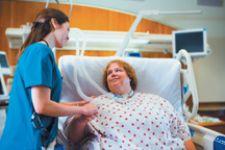
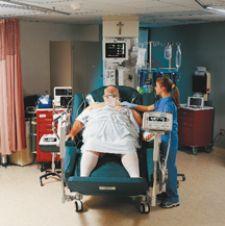

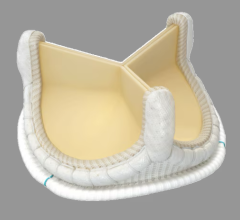
 April 23, 2024
April 23, 2024 




